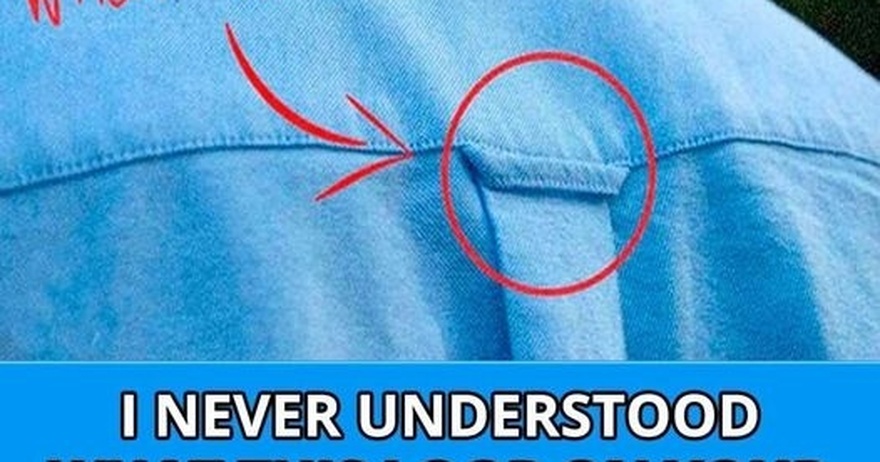Have you ever noticed a small loop on the back, just below the collar of your button-down shirt?
This seemingly insignificant detail has puzzled many, but in fact, it serves a purpose deeply rooted in history and tradition. Let’s explore the reason for the loop on the back of your button-down shirt and how it came to be.
To unravel the mystery, we must travel back to the early 20th century when the loop found its place on the shirts of sailors in the United States Navy. Sailors have always faced unpredictable and challenging conditions at sea, and their uniforms needed to be practical and functional. The loop, often called a “locker loop” or “backstay loop,” had a specific purpose on the naval uniforms.
In the close quarters of a ship, storage space is limited, especially for personal belongings.
Sailors would hang their shirts on hooks or pegs in their lockers to keep them wrinkle-free and easily accessible. The loop on the back of the shirt provided a convenient anchor point, allowing the sailors to hang their shirts without worrying about them falling off the hook and getting wrinkled or dirty.
Over time, the loop became associated with the prestigious Ivy League style. It is said that Ivy League students adopted the loop on their button-down shirts as a fashionable statement. The Ivy League style, characterized by a preppy and classic aesthetic, became popular among college students and eventually spread to the wider fashion world.
The loop’s popularity extended beyond the Navy and Ivy League campuses, becoming a staple feature in men’s button-down shirts. Even though its original purpose of hanging shirts may not be as relevant today, the loop remains as a nostalgic nod to its maritime origins and a distinguishing feature of traditional button-down shirts.
In addition to its historical significance, the loop on the back of your button-down shirt can still serve a practical purpose.
While you may not find yourself hanging your shirt on a locker hook regularly, the loop can come in handy when traveling. Folding and packing shirts can often lead to creases and wrinkles, but by using the loop, you can hang your shirt inside a garment bag or hook it onto the back of a door, allowing it to remain smooth and ready to wear.
Moreover, the loop has also become a subtle style element. Designers and fashion enthusiasts often experiment with different colors, patterns, and materials for the loop, adding a touch of personality to the shirt. Some even consider the loop as a way to express their individuality or a signature feature of a particular brand.
So the next time you put on a shirt with a loop, remember the fascinating origins and heritage that it carries. While its practical utility may have diminished in today’s world, the loop can still be used for hanging shirts while traveling and has become a distinct and recognizable detail of the button-down shirt.
